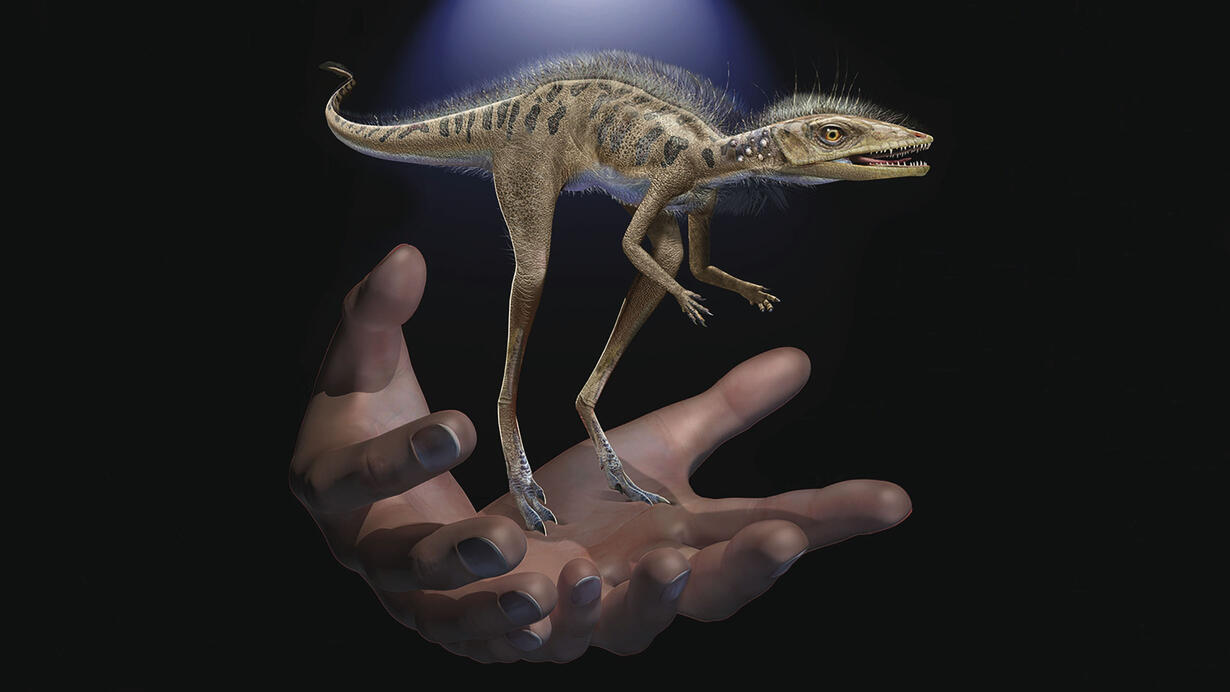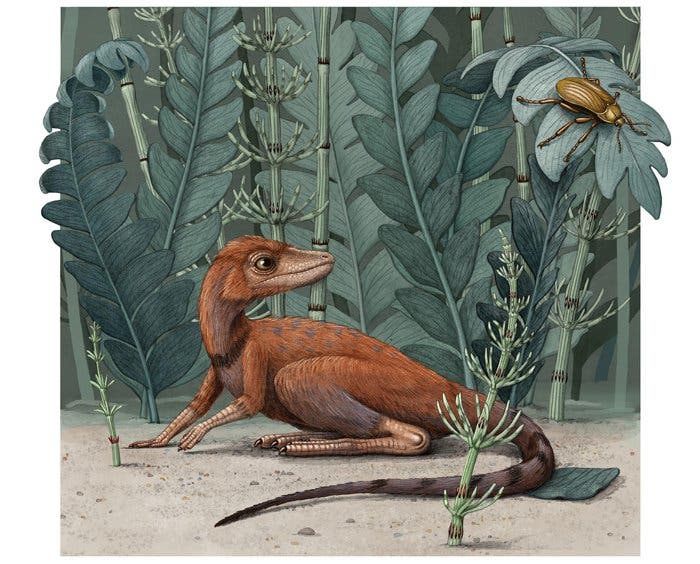A diminutive fossil is teaching us about how dinosaurs evolved to their impressive sizes.

Image credits Frank Ippolito / American Museum of Natural History (AMNH).
Christened Kongonaphon kely, meaning ‘tiny bug slayer’, this dinosaur is unusually proportioned — it was about the size of a coffee cup. The dino belonged to the group which dinosaurs and pterosaurs (flying dinosaurs) eventually branched away from.
Small, but dangerous!
“There’s a general perception of dinosaurs as being giants,” says palaeontologist Christian Kammerer from the North Carolina Museum of Natural Sciences, first author of the paper describing the findings.
“But this new animal is very close to the divergence of dinosaurs and pterosaurs, and it’s shockingly small.”
The tiny dino lived on Madagascar during the Triassic period some 237 million years ago. It stood a measly 10 centimetres (about 4 inches) in height, but its extended family — group Ornithodira — would go on to evolve into the giant dinosaurs we saw in Jurassic Park.
Researchers are, understandably, keen to better chart this transition from very small to colossal, but we haven’t found many specimens from the early Ornithodira lineage.

Image credits Alex Boersma.
The current fossil was unearthed during fieldwork in 1998 at a fossil site in southwestern Madagascar alongside hundreds of other specimens. The authors say it “took some time before we could focus on these bones”, but they quickly figured out the fossil was quite unique.
This tiny dinosaur belongs to the Lagerpetidae family, an early group of the Ornithodira lineage. While all Lagerpetidae were small, this is the smallest one we’ve found so far. The team believes these diminutive sizes weren’t by accident, but by design.
“Although dinosaurs and gigantism are practically synonymous, an analysis of body size evolution in dinosaurs and other archosaurs in the context of this taxon and related forms demonstrates that the earliest-diverging members of the group may have been smaller than previously thought, and that a profound miniaturisation event occurred near the base of the avian stem lineage,” the team writes in a new paper.
The team bases this hypothesis on the teeth of the dinosaur. Their pits and abrasions suggest the animals mostly ate hard-shelled insects, a source of food larger dinosaurs wouldn’t even bother taking into consideration. It’s possible then that this ‘miniaturization event’ allowed dinosaurs to gain an evolutionary advantage by entering new ecological niches.
Along with a smaller size, K. kely and its archosaur fellows likely also evolved traits that are hallmarks of today’s birds: new modes of bipedal movement, primitive fluff and down to keep warm, even primitive stages of flight, the researchers suggest.
The paper “A tiny ornithodiran archosaur from the Triassic of Madagascar and the role of miniaturization in dinosaur and pterosaur ancestry” has been published in the journal PNAS.
Was this helpful?



